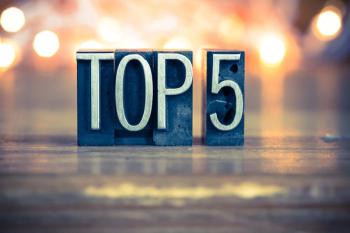
Cannabis Science and Technology
- September 2023
- Volume 6
- Issue 7
- Pages: 16-24
Measuring Microbiology, Part II: Understanding the Conditions of Microbiological Growth and Viability

A look at why understanding the conditions in which microorganisms thrive, grow, and multiply is important in both controlling microbial growth and optimizing for microbial testing.
Microbiological organisms play an important role in many biological processes for health and harm. In cannabis, as with many other consumer products, the presence of microbiological organisms can not only potentially cause deleterious health issues but also cause economic losses for the cannabis producers. Understanding the conditions in which microorganisms thrive, grow, and multiply is important in both controlling microbial growth and also optimizing for microbial testing.
Contamination of food, water, and consumer products is a huge concern around the world causing hundreds of thousands of illnesses and deaths. The major contributor to these exposures is microbiological organisms. One only must turn on the television or pull up the US Food and Drug Administration (FDA) website to see another product being alerted or recalled because of microbial contamination. The first step in producing safe cannabis products is understanding the conditions which allow microbial viability, encourage growth, and promote propagation. Both at the point of product and in the testing laboratory, it is important to understand the factors which persevere the accurate biota to allow for accurate testing.
Testing laboratories tasked with protecting the consumer product supply, including cannabis, use many different methods to detect and in some cases quantify the presence of microorganisms including cell culture, chromogenic media, enzyme-linked immunosorbent assays (ELISA), and polymerase chain reaction (PCR). Some of the most used methods of detection and propagation of microbiological organisms include cell culture and chromogenic media.
Finding Food
The first order of survival for organisms is to find nutrition to grow, survive, and propagate. Organisms can be classified by how they obtain nutrients. Phototrophs are organisms that have an internal process to convert the energy in light into nutrients (that is, algae with chlorophyll). Chemotrophs obtain nutrients from chemicals produced outside of the organism (most of the typical microorganisms of interest to cannabis). Under chemotrophs, organisms can either be organotrophs (obtaining nutrients from organic compounds) or lithotrophs (nutrients obtained from inorganic compounds).The method the organisms obtain organic or inorganic chemicals can either be from decaying or dead organisms or tissues (saprobes) or from living organisms and tissues (parasites).
The major elements that can impact microorganism growth are carbon, oxygen, hydrogen, nitrogen, phosphorus, and sulfur. Minor elements that are important biological factors, such as vitamins and coenzymes, include copper, iron, potassium, magnesium, calcium, molybdenum, manganese, and zinc.Carbon is one of the most important of the major elements utilized by chemotrophs. The source of the carbon can either be elemental sources of inorganic carbon (autotrophic) such as carbon dioxide or organic carbon sources (heterotrophic) (see Figure 1). Most organisms including many bacteria, fungi, and animals are chemoorganoheterotrophs.
Another important element for microorganisms is oxygen.Bacteria that thrive in oxygenated environments are aerobic and ones that are most negatively impacted by the presence of oxygen are called anaerobic. Aerobic microorganisms can use molecular oxygen to produce more energy than anaerobic organisms, but they are exposed to reactive forms of oxygen which can damage cells. Aerobic organisms often require antioxidants or enzymes like peroxidases, catalase, or mutases to survive in oxygen environments.
Many microorganisms fall somewhere between the two extremes of anerobic and aerobic into five categories: obligate aerobes, facultative anaerobes, aerotolerant anaerobes, microaerophiles, and obligate anaerobes (see Table I and Figure 2).
Obligate aerobes require oxygen for growth and prefer high oxygen environments. These organisms produce enzymes to counteract oxidative effects which allow them to effectively use oxygen to produce nutrients. In tube media, these microorganisms congregate at the top of the media with higher oxygen concentrations. For the cannabis industry, molds are most often obligate aerobes.
Facultative anaerobes can exist in high and low oxygen environments, but require oxygen for increased growth.They produce enzymes to combat oxidation. In growth media, these microorganisms grow best at the top area of higher oxygen concentrations, but can be found distributed throughout the media tube.Microorganisms of concern to the cannabis industry, such as yeasts, E. coli, and Salmonella, are all facultative anaerobes.
Microaerophils prefer low oxygen to anaerobic environments and grow with small amounts of oxygen. These microorganisms do not produce enzymes to combat oxidation and will be found in media tubes near the center of the tube with low oxygen.
Aerotolerant anaerobes tolerate a wide range of oxygen levels. Growth is not affected by oxygen levels, and they have limited enzymes for combatting oxidation. In a growth media tube, they can be found evenly distributed throughout the media.
Obligate anaerobes survive in low to no oxygen environments and have almost no tolerance to oxygen. Growth occurs in anaerobic conditions, and they lack the ability to combat oxidation. Oxygen can create toxic effects to these anaerobes because of a lack of enzymes against oxidation.
Temperature and Microbial Growth
Nutrients are only one component in the growth of microorganisms. Temperature is a critical factor in many organisms’ growth. Most living organisms exist in the "Goldilocks range" of approximately 0 °C to 40 °C. As temperatures drop below the low end of the range, enzymatic reactions slow or stop and eventually cell death occurs. In the opposite direction, as temperatures rise above the higher range, proteins denature, and cell death occurs for most organisms. Microorganisms, bacteria in particular, have been known to exist in a multitude of extreme conditions including extreme temperatures (see Table II). Microorganisms of concern in the cannabis industry have moderate temperature ranges (mesophilic) within the same range of most organisms. Mesophiles include the most targeted microorganisms in cannabis testing such as E. coli, Salmonella sp, Listeria sp, molds, and yeasts.
Each microorganism has its range of temperature limits that, once exceeded for a given time period, inactivate or kill that organism. Food safety guidelines are created based on exposing products to various (usually high) temperatures for a set period of time to eliminate potential pathogens (see Table III).
These inactivation temperatures can become important during product or sample processing if products are exposed to high temperatures for extended periods of time. In cases of product processing, heating consumable items can eliminate living microorganisms, but the improper handling of product samples heading to an analytical laboratory can falsely reduce the microbiota being tested.Sample processing in the laboratory, which may produce heat for a period of time, can also reduce or damage the target microorganisms that will affect the analytical results for some testing methods that require living cells.
pH Conditions
Other factors that can affect the growth of microorganisms can include pH. The pH is a measure of the acidity or alkalinity of a solution. Most bacteria and other microorganisms prefer an ideal environment around a neutral pH ranging from 5–8 (neutrophiles). There are some organisms or strains that can survive in acidic environments under 5.5 pH (acidophiles) or in alkaline conditions above 8.5 pH (alkalophiles). Cannabis microbiological targets can cover a wide range of pH—from molds, which run the pH spectrum, to E. coli, which prefers a narrow range of pH from 4.4 to 8.5. This wide range of pH means some target organisms can survive many cannabis production processes (see Table IV).
Water Activity and Moisture Content
The availability and activity of water is an important factor in the growth and metabolism of organisms. Water is available either as bound water (bound to molecules), which is not available to microorganisms, or free water (unbound to molecules in food). Water activity (aw) of a product is the ratio between the vapor pressure of the product itself and the vapor pressure of DI water under ideal conditions. Water activity is a measurement of free water available to microorganisms. A water activity value of 0.9 means that the vapor pressure is 90% of the free water. Water activity increases with increasing temperatures.
Water content, in contrast, is the amount of water by mass of a product or material while water activity is a measurement of water available for microbial growth. Water content is part of the composition of a product whereas water activity is a quality control aspect to sustain shelf life of a product. Reduction of water activity lowers the availability of water to the organisms, which can disrupt metabolic processes and slow growth. Many of the organisms important to cannabis have water activity limits from 0.7 to 0.9 (see Table V). Ideally cannabis flower has a water activity of about 0.6; with potential microorganism growth occurring above 0.65. Keeping the water activity of products lower than the water activity levels of the common microorganisms inhibits growth.
Colony Growth
When favorable conditions of nutrients, pH, moisture, and temperature occur microbiological organisms can profligate quickly either intentionally or unintentionally. Generation time is the amount of time required for a microbial population to double. The mean generation time (g) is equal to the time (t) in minutes divided by the generation number (n) (see Equation 1), while the generation number (n) is ratio of the log of the number of cells at the beginning of the culture (N0) and the end of the culture (Nt) multiplied by 3.3 (see Equation 2 and Table VI).
For organisms of interest to cannabis testing, the generation time can range under optimal temperature (20–40 °C) and media conditions from less than 30 min for some Enterobacter, E. Coli, Salmonella, and Staphylococcus species to hours for Listeria, Pseudomonas and Klebsiella species (see Table VII). In native settings, depending on the conditions the generation time or doubling time can be either accelerated or delayed by the availability of nutrients, water, temperature, and so forth.
Final Thoughts
The ability to understand the optimal conditions and factors for microbial growth of concern in cannabis aids both the laboratories and industry control and testing for those organisms. Changes in conditions of cannabis products during all phases of the product life can adversely affect the microbiota, which will be tested in the laboratory. Knowing the conditions that restrict growth, increase propagation, or kill the organisms can help the industry to optimize methods to preserve samples for testing. In the laboratory, the knowledge of the correct conditions to store and process samples so as not to significantly change the microorganism populations becomes key to accurate testing.
In the next column, we will continue the discussion of detection and quantitation of the diverse types of cannabis microbiological targets starting with microbiological cultures and various types of chemogenic and plating techniques and media.
Further Reading
- Atkins, P., Measuring Microbiology, Part I: A Look at the Microbiological Contaminants in Cannabis, Cannabis Science and Technology, 2023, 6(5), 16-22.
- Carter, B.P., The What, How, and Why of Water Activity in Cannabis, Cannabis Science and Technology, 2019, 2(4), 30-35.
- Boyar, K., Cannabis Microbial Testing - Methodologies & Considerations. 10.1201/9780429274893-6 (2021).
- USDA,
www.fsis.usda.gov .
About the Columnist
Patricia Atkins is a Senior Applications Scientist with Spex, an Antylia Scientific company and has been a member of many cannabis advisory committees and working groups for cannabis including NACRW, AOAC, and ASTM.
How to Cite This Article
Atkins, P., Measuring Microbiology, Part II: Understanding the Conditions of Microbiological Growth and Viability, Cannabis Science and Technology, 2023, 6(7), 16-24.
Articles in this issue
over 2 years ago
Chromatography Theory, Part VIII: Pulling It All TogetherNewsletter
Unlock the latest breakthroughs in cannabis science—subscribe now to get expert insights, research, and industry updates delivered to your inbox.




